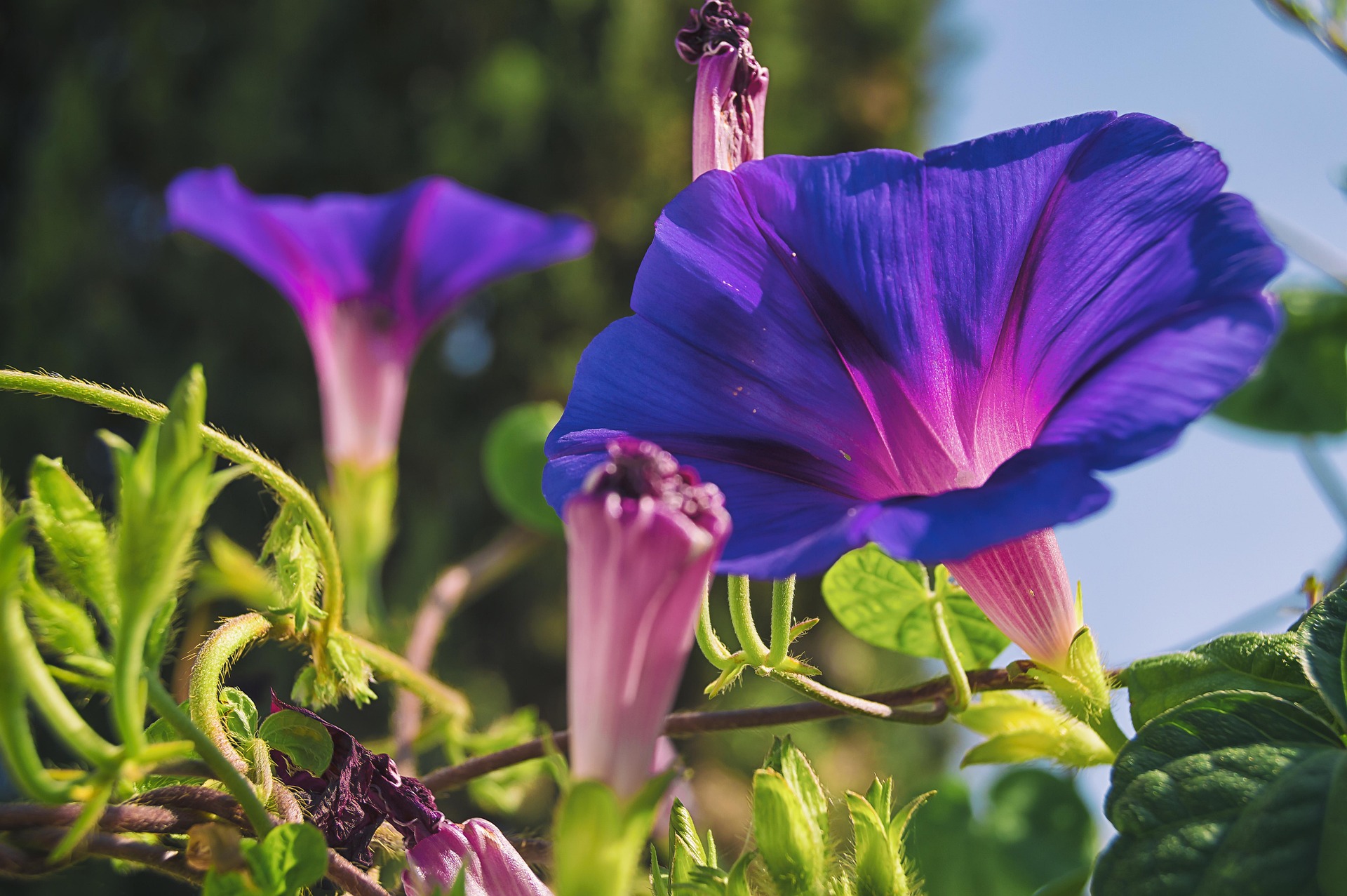Most gardeners quickly realize that not all flowers bloom at the same time. Not only do they bloom during different parts of the season, many bloom at different times of the day.
You may have noticed a few names in our catalog that hints at this pattern, like Morning Glories, Evening Primroses, and Four O’clocks. We also have heliotropic flowers like sunflowers that follow the sun as it moves across the sky during the day.
So why do these flowers bloom this way, and how do they know when to bloom? Can plants tell time? In this post, we’ll dive into how these plants operate.
Circadian Rhythm
You may have heard of a circadian rhythm in relation to human beings. In simple terms, it’s our internal clock that functions on a 24-cycle and regulates our alertness and sleepiness by responding to changes in light and our environment.
So, what does this have to do with plants? Researchers have found that plants have circadian rhythms, too. This biological clock regulates processes like photosynthesis, stomatal movement, and, in many cases, flower formation and opening. Some plants even use their circadian rhythm to time preparations for attacks by daytime active pests!
So Why Bloom at Different Times?
Despite plants having a functioning circadian rhythm, not all flowers open at the same time of day. This is because there are advantages to blooming at specific times.
 Morning Glories, Spiderwort, Daylilies, and other Daytime Blooms
Morning Glories, Spiderwort, Daylilies, and other Daytime Blooms
There are several flowers like morning glories, spiderwort, and daylilies with blooms that open just a single time. Many of these, like morning glories, open when they’re hit by the sun in the morning. You may have noticed that if you plant morning glories in shadier areas, they may not open until later in the day.
These flowers take advantage of daytime pollinators like bees and butterflies. Morning glories, specifically, co-evolved with Morning Glory Bees (Cemolobus ipomoea), which are thought to be most active in the morning!

Four O’Clocks, Moonflowers, Evening Primroses, and Other Evening and Nighttime Blooms
While many flowers bloom during the day, others open in the evening. These night owls aren’t confused; they’ve evolved to take advantage of nocturnal pollinators. Worldwide, bats and moths take the night shift, pollinating a number of plant species.
Around here, most of these flowers, including those listed above, are primarily pollinated by the Sphingidae family of moths, commonly called hawkmoths or sphinx moths. This family includes about 1450 species of moths with long tongues and the unique ability to hover while pollinating flowers. This hovering has evolved only in a few other species: hoverflies, certain bats, and hummingbirds. Hawk moths hover so well that they’re often mistaken for small hummingbirds!
Why Do Sunflowers Move?
Sunflowers, on the other hand, stay open longer than all of these flowers but move each day! What’s up with that?
Sunflowers are the poster children for plants with heliotropism (directional growth in response to sunlight) and circadian rhythm. Each day, they track the sun across the sky, starting facing the eastern sunrise in the morning and finally facing the western sunset in the evening.
It goes further than that, though. Not only do they respond to the sun, they anticipate it. As the sun sets each night, the plants face west, but overnight, they slowly move to face east in anticipation of the morning sun.
Researchers say that the plant’s circadian rhythm times this movement, while the plant’s growth rate controls the actual movement. Scientists discovered that growth rates on the plant’s east side were high during the day and low at night, while the growth rates on the plant’s west side were high at night and low during the day, resulting in the plant turning.
We can learn so many fun, odd, and exciting things from a garden! Our flower’s adaptations to the world around them are just one of many factors we’re beginning to understand, but there’s so much more we don’t know. We should always keep growing and learning.

